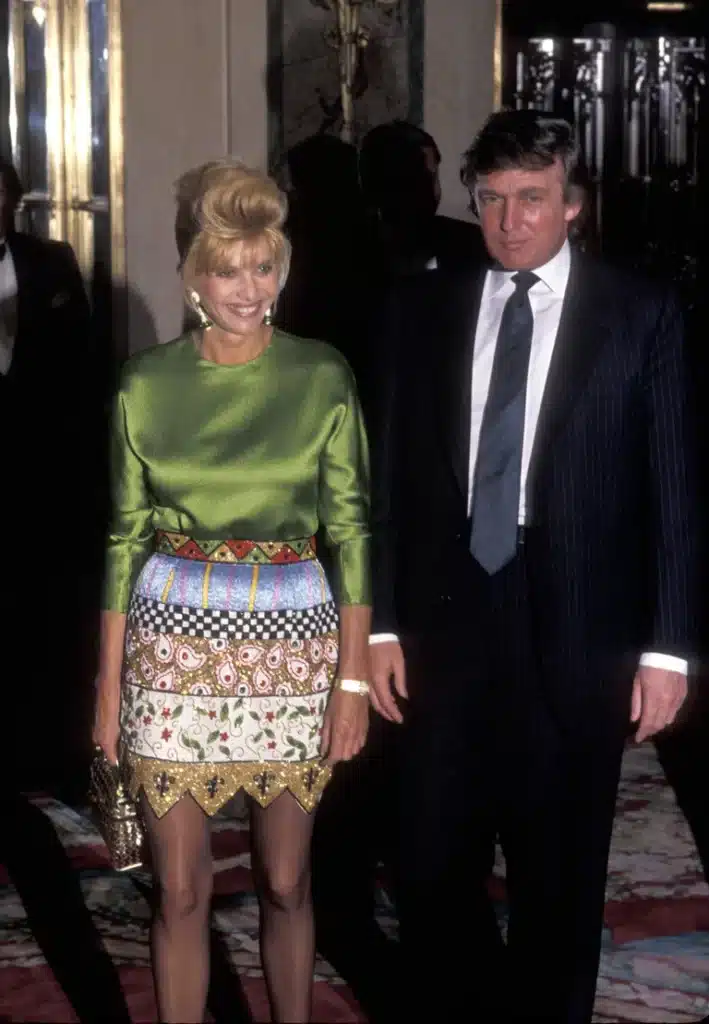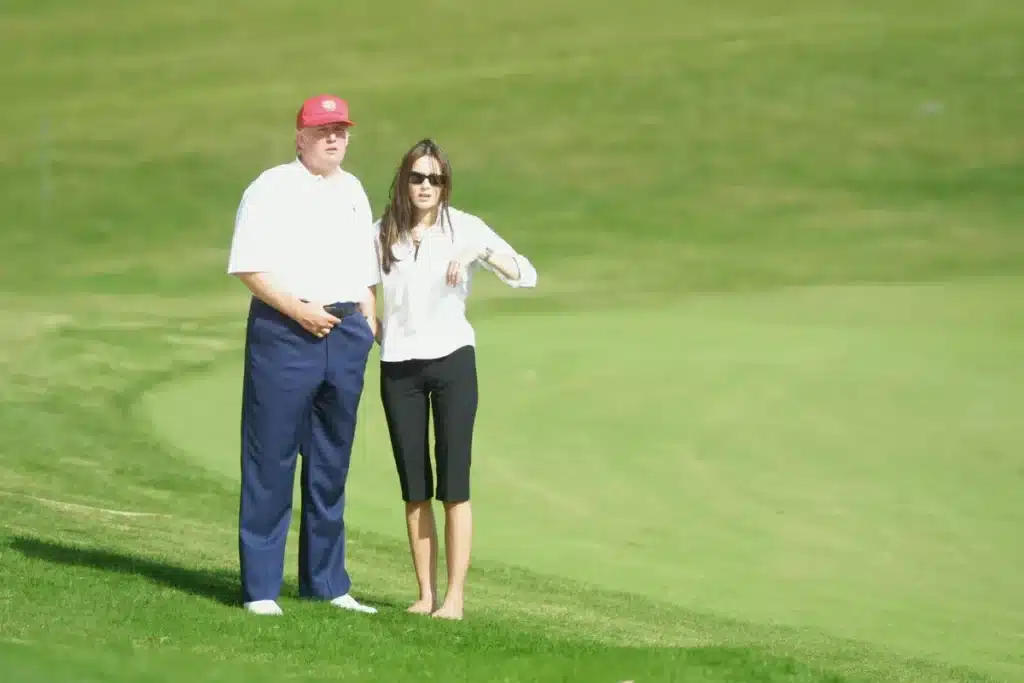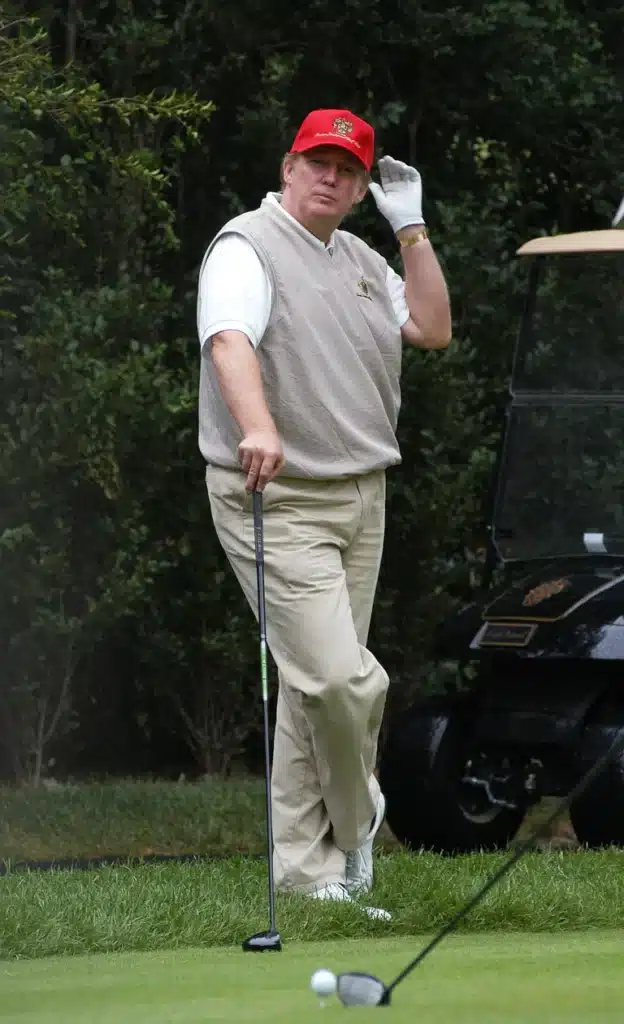When Ivana Trump passed away suddenly in July 2022, her final resting place raised more than a few eyebrows. The former model, businesswoman, and first wife of Donald Trump was buried at Trump National Golf Club in Bedminster, New Jersey—a move that, at first glance, seemed deeply personal. But as the dust settled, it became clear that Ivana’s quiet grave, placed just beyond the first tee, may have served more than a sentimental purpose. It may have been the missing piece in a much longer, more strategic plan—one involving farmland loopholes, cemetery designations, and potentially massive tax savings.
Ivana, who died at age 73 from blunt impact injuries caused by an accidental fall down the stairs in her Manhattan townhouse, had always remained close to the Trump family. Her death was met with tributes from Donald and their three children—Donald Jr., Ivanka, and Eric—who praised her resilience, style, and devotion as a mother and grandmother. Her burial came quickly after her death, and by the time the public noticed the unusual choice of location, the decision had already been finalized.

Her grave, simple in appearance and surrounded by white flowers, is located near the back edge of the golf course, positioned far enough from the action that most golfers wouldn’t see it. It’s the kind of quiet, secluded spot that feels intimate—yet, upon closer inspection, serves a dual purpose.

That’s because Donald Trump had been laying the groundwork for a cemetery at Bedminster for more than a decade.
Back in 2012, reports surfaced that he intended to build a family mausoleum on the property. The plan evolved over time—from a private tomb to a 10-plot family cemetery, and then to an ambitious 284-plot public burial ground. Documents from the Trump Family Trust even showed that another New Jersey property was being explored for nonprofit cemetery status—an effort that would unlock sweeping tax benefits.

Under New Jersey law, land used for cemeteries is exempt from nearly every kind of tax: property, income, sales, business, even inheritance taxes. Nonprofit cemetery companies pay nothing on the land they manage, and by legally designating parts of a golf course for cemetery use, a significant portion of the estate could be shielded from traditional taxation.
But getting the plan approved wasn’t easy. Bedminster is a scenic, exclusive township known for rolling hills and elegant estates. It’s not a place eager to host mausoleums or roadside chapels. Donald’s original plans for a large mausoleum were rejected. But with help from consultants and former town officials, he scaled back and secured approval for a more discreet proposal: up to 500 graves, provided they remained out of sight.

The revised plan allowed club members—who reportedly paid $150,000 to join and $20,000 in annual dues—to be buried there. According to Donald’s consultant, Ed Russo, the burial ground would be small in scale, with perhaps one or two burials a year. The cemetery would be managed by a nonprofit entity, potentially reducing the Trump Organization’s property taxes on the designated land.
Meanwhile, Donald had already found other creative ways to cut taxes on the property. In one case, he claimed that part of the estate was farmland because mulch was produced from trees on the grounds. That earned him a steep tax discount—on one parcel valued at $461,000, he paid just $16.31 in property taxes. Altogether, thanks to the use of farmland assessments on nearly 184 acres of the resort, his annual savings were estimated at over $88,000.

All of this made Ivana’s burial at the golf course feel less like a spontaneous tribute and more like a strategic move that helped cement the estate’s eligibility for cemetery classification.
Of course, for the Trump family, the location also held personal meaning. Donald had spoken in the past about wanting to be buried there himself, describing the Bedminster property as a place where people “respect each other.” And while some critics questioned whether the intention behind Ivana’s burial was heartfelt or financial, it’s possible it was both.



In the end, Ivana Trump’s grave became more than a resting place—it was the final step in a decades-long land-use strategy that had quietly been unfolding behind the scenes. Whether it was about sentiment, legacy, or a savvy way to protect assets, the truth may never be fully known. But what is certain is that her burial brought an ambitious plan into reality—one where grief, real estate, and tax codes all intersected on the green fairways of a New Jersey golf course.
